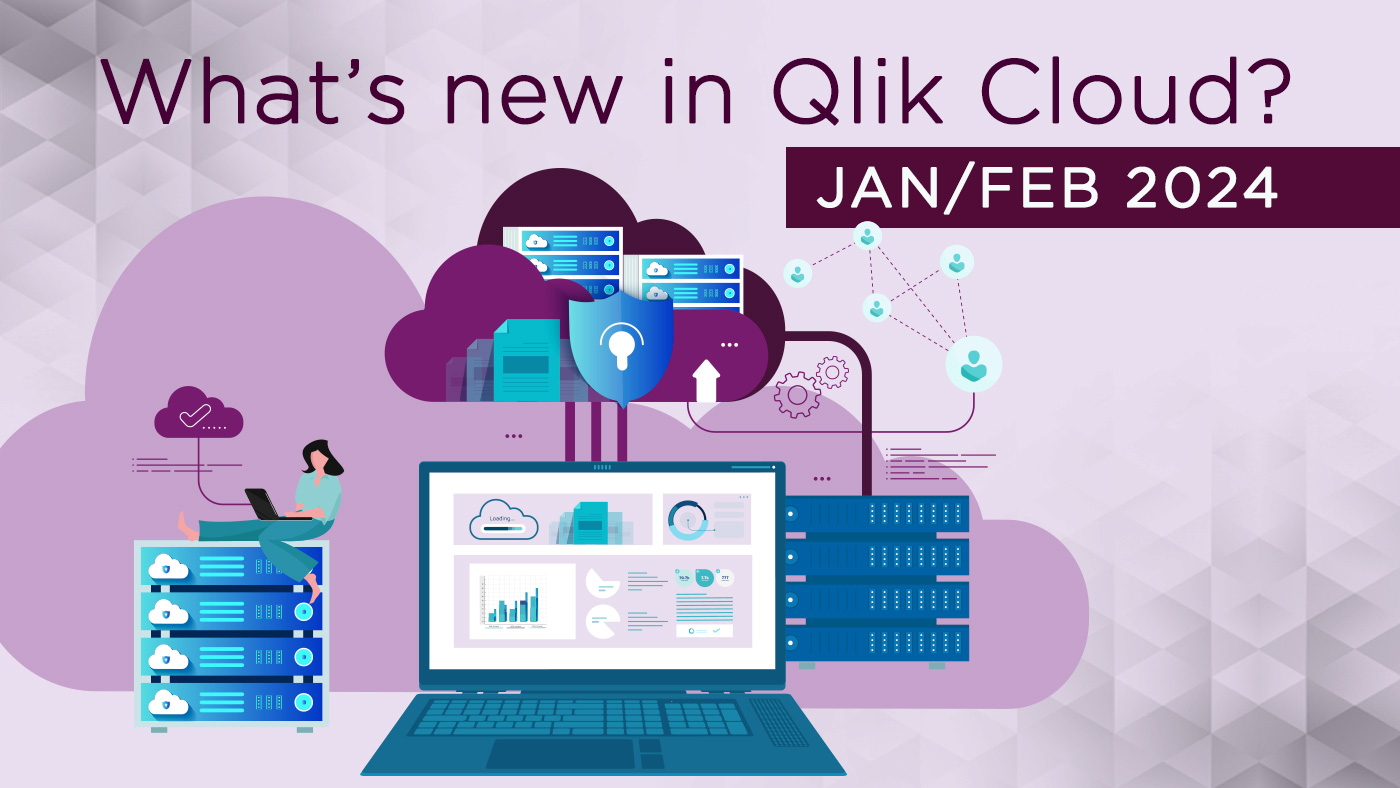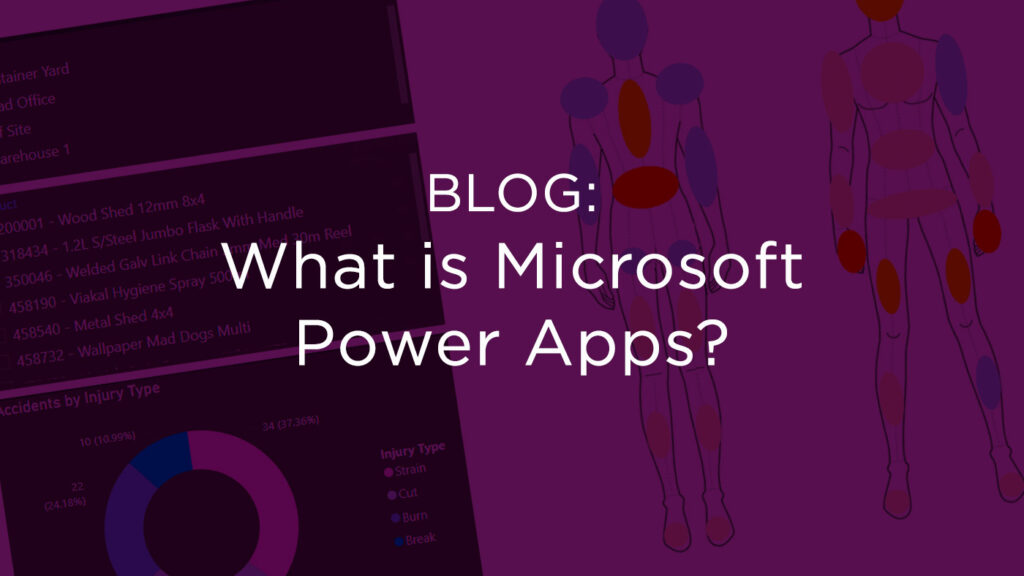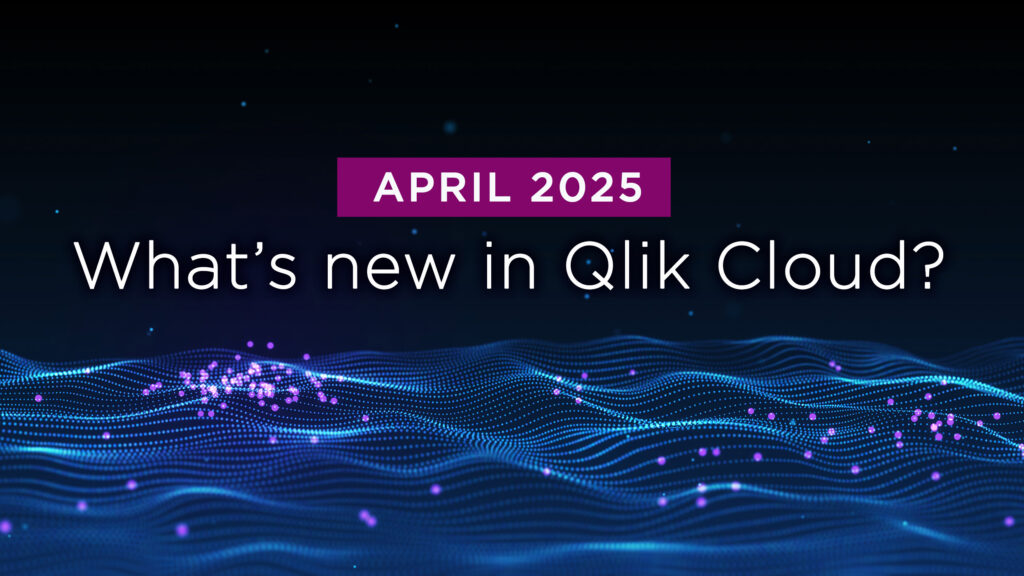
What’s New in Qlik Cloud
– January & February 2024 Updates –
Welcome to the first, ‘What’s New in Qlik Cloud’ blog for 2024. This bumper edition includes the latest and greatest enhancements made to the Qlik Cloud Platform. Highlights for this edition include; support for Microsoft Fabric as a target in Data Integration, the ability to export apps from a managed space within Qlik Cloud, Key Driver Analysis within Qlik Cloud, and a new version of the Qlik Data Gateway – Direct Access version. Learn more from Climber’s Senior BI Consultant Roger Gray and Data Integration Consultant Mark James.
Data Analytics
A major change is a complete rebranding of Qlik, with a sparkly new logo and website refresh. The new Qlik logo represents a bold, modern step forward for Qlik, while maintaining key elements of their brand equity. The embedded symbol represents an evolution of the previous “magnifying glass” concept and stands for complete capabilities across data integration, data quality, analytics, AI/ML, and more.
1. Export apps from Managed Spaces
Space owners and users, with the “Can Manage” role, can now export Qlik Cloud apps from Managed Spaces. These apps can only be exported without data. This is a useful enhancement in the occasions when the source app is accidentally deleted without making a backup. We recommend ensuring a robust version control process is in place, however it is nice to have an alternative process just in case.
2. Key Driver Analysis
Key Driver Analysis is a new capability in Qlik Cloud that leverages the power of Qlik AutoML. It helps users to easily understand the most influential factors that are driving the outcomes in their analytics. Users can simply right-click on any object to initiate a key driver analysis, specify a target measure and, if desired, select specific features they want to include. The AutoML engine will then generate an analysis that shows the fields in your data model that are most effecting the target measure, complete with visualisations and Natural Language Generation.
You can see the key drivers ranked by importance and can further select each one to get a breakdown and distribution of the values and their influence. With key drivers, users can better understand the reasons for historical results, not just the what, but the why, providing deeper insight and support for more meaningful actions.
3. Copy and Paste Style
You can now copy and paste stylings from one chart to another within Qlik Cloud. This feature is welcome with the increase in styling options available, this makes it easier for users, to avoid having to manually reapply any styling to multiple visualisations.
4. Tabular Reports
This new feature introduces a new add-in intended for use within Excel. You can use Excel to design tabular reports containing data from your Qlik Cloud Apps and save the reports in .xlsx format. This capability is great for anyone needing to generate tabular reports where the table row count is large or of variable length.
5. Custom SQL in Direct Query
The ability to use Custom SQL within a Direct Query within Qlik Cloud has now been introduced. Custom SQL statements can easily be used within a Qlik load script, and be referred to with variables or dollar expansions. Custom SQL brings a lot of database specific features like time-travel, in-line loads, and cascaded filtering within a Qlik load script.

Data Integration
A key new addition to Qlik Cloud Data Integration is around the addition of Microsoft Fabric as a target. More details on other new features can be found below.
1. Optimised data delivery to cloud platforms
You can now fine-tune performance by controlling the frequency and the conditions under which changes will be applied to your target cloud data warehouses. This will allow for a higher level of control to replication of data to your cloud data warehouse. Allowing for control on costs incurred and load on your cloud data warehouse.
2. New data lake targets for Replication projects
As further enhancements to the supported replication targets within Qlik Cloud Data Integration, new targets now include Amazon S3, Azure Data Lake Storage (ADLS) and Google Cloud Storage (GCS). Files will be delivered in either Parquet, JSON or CSV format. This is positive news as it further expands the offering of different replication targets available with a focus on Data Lakes.
3. Entering database names manually instead of selecting from a list
This is an interesting enhancement for users who use SQL Server based platforms, particularly with large volumes of schemas and databases. Traditionally, DBAs would need to provide access for users to the master database to allow Data Integration users to select their desired source or target database from a list. Here is a list of the connectors which support this new feature, with more expected in the coming weeks.
Source Connectors:
- Microsoft SQL Server (log based)
- Microsoft SQL Server (Microsoft CDC based)
- PostgreSQL
Target Connectors:
- Azure Synapse Analytics Target
- Microsoft SQL Server Target
4. Support for Microsoft Fabric as a data pipeline target
Microsoft Fabric joins the ever-expanding list of data warehouses that can be used as targets in data pipeline projects. This is a key new addition which links the newly released Microsoft Data Fabric as a target within a Qlik Cloud Data Integration project, bringing both Microsoft and Qlik together.

Conclusion
In conclusion, Qlik’s recent updates and features demonstrate their commitment to improving data management and analysis capabilities. Whether you are focused on data integration, error handling, or analytics, these enhancements offer valuable tools and capabilities to help you make the most of your data. Stay tuned for further updates and innovations from Qlik as they continue to shape the data analytics and integration landscape.
WANT TO KNOW MORE? CONTACT US!
Roger Gray
BI Manager
roger.gray@climberbi.co.uk
+44 203 858 0668
Tom Cotterill
Senior BI Consultant
tom.cotterill@climberbi.co.uk
+44 203 858 0668
News archive

What is Microsoft Power Apps?
Microsoft Power Apps is a low-code platform that enables businesses to swiftly develop custom applications tailored to their unique needs, without requiring extensive coding knowledge. In this blog you will learn more about the components, use cases, and benefits for your business.
>> Read more
What’s New in Qlik Cloud – Apr 2025
Qlik continues to roll out a comprehensive set of updates across the platform – from workflow automation, machine learning improvements, charting enhancements, new scripting tools, and expanded global coverage.
>> Read more
Optimising Workforce Management for Virgin Wines through custom Microsoft Power Apps
Read how we transformed operations for Virgin Wines, significantly improving their ability to forecast and allocate resources effectively.
>> Read more!
